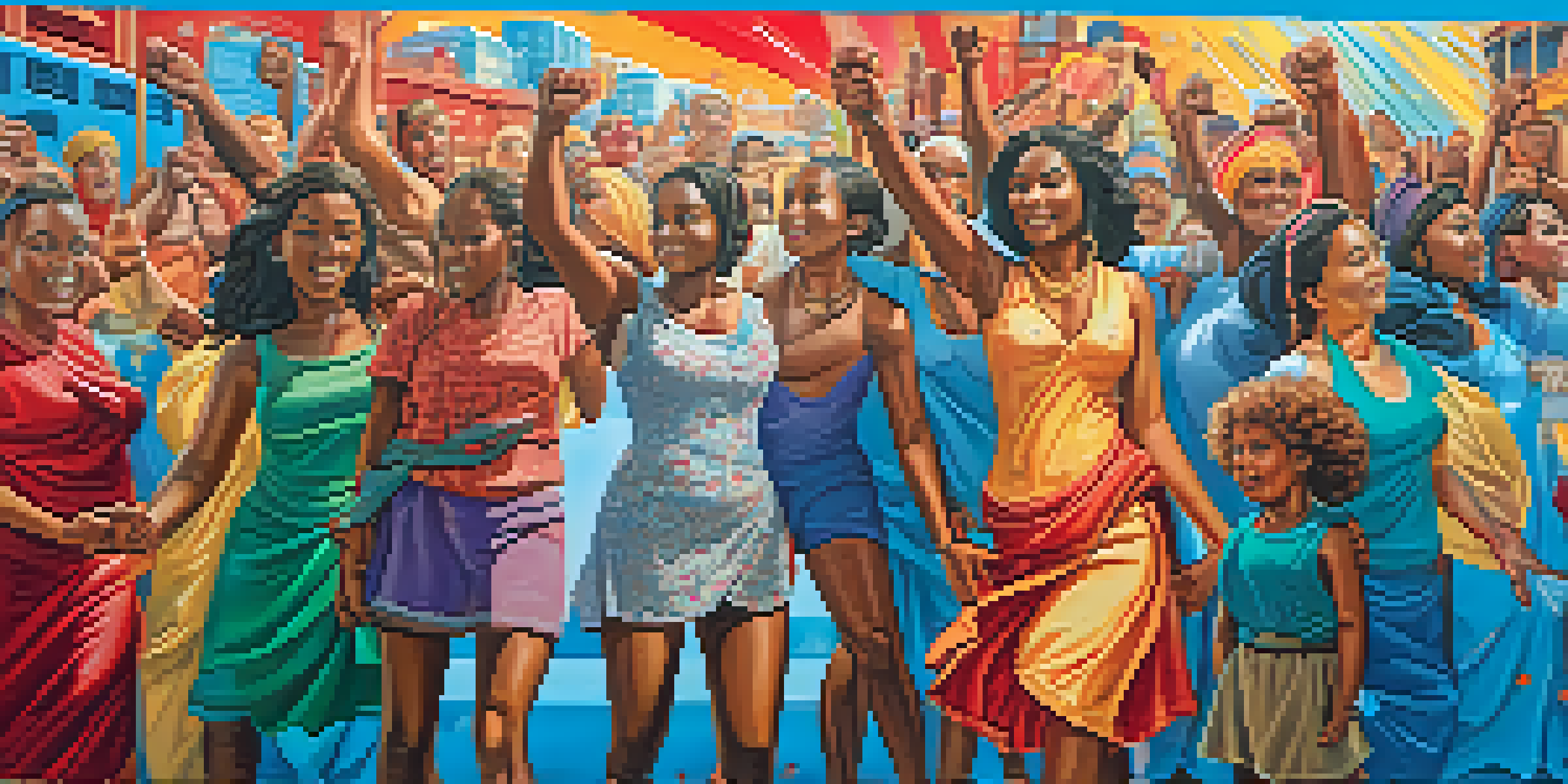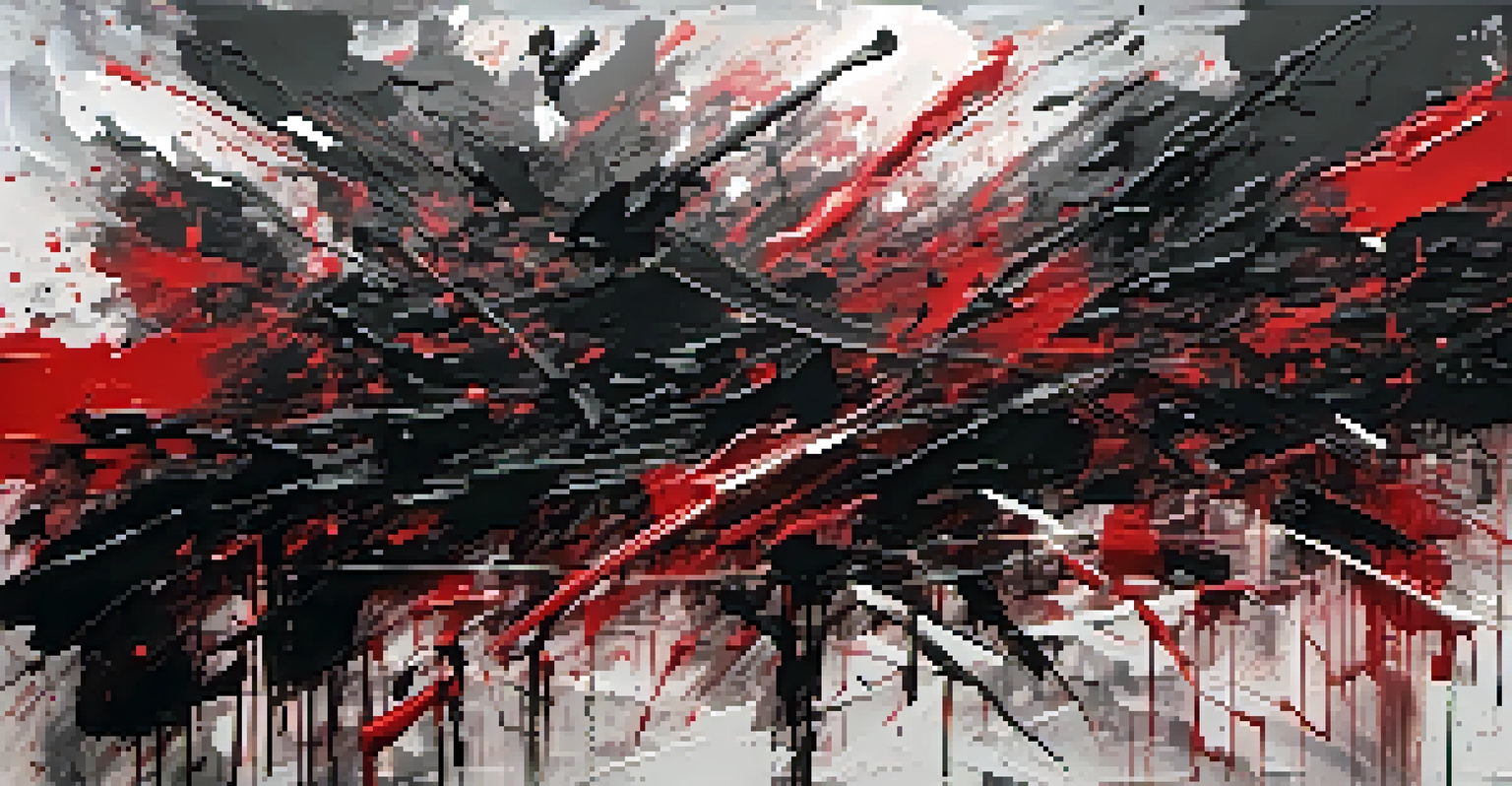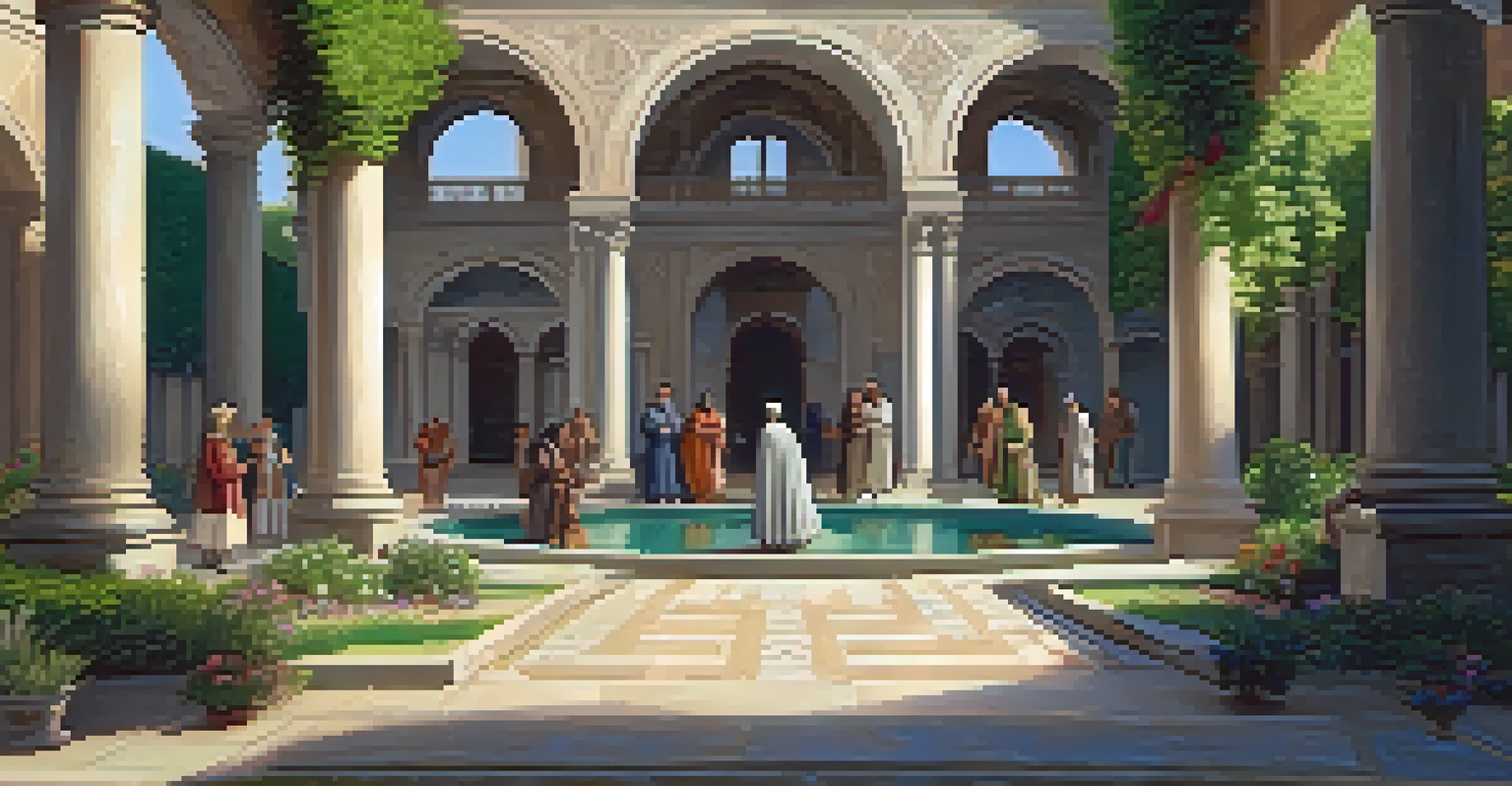Art as a Reflection of Political Change Throughout History

The Power of Art in Political Movements
Art has always been a powerful tool for political expression, serving as a voice for the voiceless. From paintings to music, artists have used their work to challenge authority and inspire change. For instance, the protest songs of the 1960s captured the spirit of civil rights movements, resonating with those fighting for justice.
Every artist dips his brush in his own soul, and paints his own nature into his pictures.
Notably, the iconic 'Guernica' by Pablo Picasso portrays the horrors of war and the suffering of civilians during the Spanish Civil War. This piece not only reflects the political climate of its time but also continues to ignite conversations about the impact of conflict on humanity. Through such works, art becomes a catalyst for awareness and action.
Related Resource
Moreover, art's ability to evoke emotions can sway public opinion, making it a powerful ally in political struggles. Artists often find innovative ways to communicate complex ideas, making art an essential part of political discourse throughout history.
Renaissance Art and the Birth of Humanism
During the Renaissance, art flourished alongside significant political shifts, particularly in Europe. This period marked a move away from religious dominion toward ideas emphasizing humanism, which celebrated individual potential and achievements. Artists like Leonardo da Vinci and Michelangelo produced works that not only showcased human beauty but also reflected the changing values of society.

For example, da Vinci's 'The Last Supper' explores themes of betrayal, loyalty, and the human condition. Such works encouraged viewers to question their beliefs and the political structures around them. The rise of humanism through art played a crucial role in shaping modern political thought.
Art as a Catalyst for Change
Art has historically served as a powerful tool for political expression, inspiring movements and challenging authority.
Thus, Renaissance art serves as a testament to how political change can inspire profound cultural and artistic developments. It illustrates how artists can mirror society's evolving values, paving the way for future generations to reflect on their own political contexts.
Revolutionary Art: The French Revolution's Influence
The French Revolution of 1789 marked a significant turning point in art and politics. Artists began to depict revolutionary themes, celebrating liberty, equality, and fraternity. Works like Eugène Delacroix's 'Liberty Leading the People' not only captured the spirit of the revolution but also became symbols of the fight for freedom worldwide.
Art is not freedom from discipline, but disciplined freedom.
This painting showcases the power of art to galvanize a movement, portraying a woman personifying Liberty leading a diverse group of revolutionaries. Such imagery inspired countless others to rise against oppression, demonstrating how art can become intertwined with political ideals.
Related Resource
The French Revolution's impact on art illustrates how social upheaval can lead to a renaissance of artistic expression. Artists respond to the tumultuous times, producing works that resonate with the collective aspirations of the people.
Modern Art and the Reflection of War
The 20th century brought about two world wars, which heavily influenced modern art movements. Artists responded to the chaos and destruction surrounding them, using their work to process trauma and critique the political motives behind war. Abstract expressionism, for instance, emerged as a reaction to the disillusionment of war.
Consider the works of artists like Jackson Pollock, whose chaotic drip paintings reflect the unpredictability and chaos of modern life. These pieces, while abstract, serve as a commentary on the emotional fallout of political conflict, highlighting the profound impact of war on society.
Humanism and Artistic Evolution
The Renaissance period marked a significant shift towards humanism, influencing artists to reflect societal values and political thought.
Through modern art, we see how artists grapple with the complexities of political realities, using their medium as a form of resistance and reflection. This era exemplifies how art can encapsulate the human experience in response to global events.
Art as Resistance: The Role of Street Art
In recent decades, street art has emerged as a powerful form of political expression, often serving as a voice for marginalized communities. Artists like Banksy use public spaces to comment on social issues, making their work accessible to a broader audience. Street art transforms urban environments into canvases of resistance, challenging political status quos.
For example, the murals depicting the struggles of the Black Lives Matter movement highlight how art can be a form of protest. These pieces not only beautify the city but also provoke thought and inspire action, illustrating the transformative power of street art in contemporary political discourse.
Related Resource
Thus, street art represents a modern evolution of political expression, where artists use their creativity to address urgent societal issues. It reinforces the idea that art remains a vital tool for activism and social change in today's world.
Censorship and the Impact on Artistic Expression
Censorship has often threatened artistic expression throughout history, particularly when art challenges prevailing political ideologies. Governments have sought to control art as a means of maintaining power, leading to the suppression of dissenting voices. This struggle between creativity and censorship highlights the importance of freedom of expression in a democratic society.
For instance, the Soviet Union's restrictions on artists forced many to find subtle ways to convey their messages. Artists like Marc Chagall and Wassily Kandinsky navigated these limitations, creating works that hinted at deeper meanings, symbolizing resistance against oppression.
Street Art's Role in Modern Activism
Street art has emerged as a vital form of political expression, addressing social issues and empowering marginalized voices.
The relationship between censorship and art illustrates how, even in the face of restrictions, artists find ways to speak out. It underscores the resilience of creative expression as a form of political commentary, reminding us of the vital role art plays in advocating for change.
The Future of Art in Political Discourse
As we look to the future, the role of art in political discourse continues to evolve. Digital platforms have expanded the reach of artists, allowing them to engage with global audiences and address pressing issues in real-time. This accessibility fosters a new wave of political art that resonates with younger generations, who are passionate about social justice.
Activism through art can now take many forms, from viral social media campaigns to interactive installations. Artists are leveraging technology to create immersive experiences that challenge viewers to engage with political issues on a deeper level. This shift showcases the adaptability of art in responding to contemporary challenges.

Ultimately, the future of art in political discourse holds immense potential for fostering dialogue and inspiring change. As artists continue to innovate and address the complexities of our world, their work will undoubtedly remain a crucial reflection of societal values and political realities.